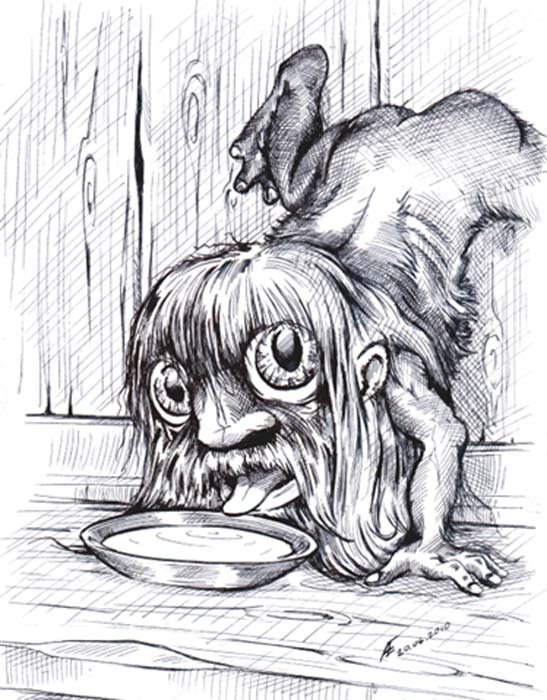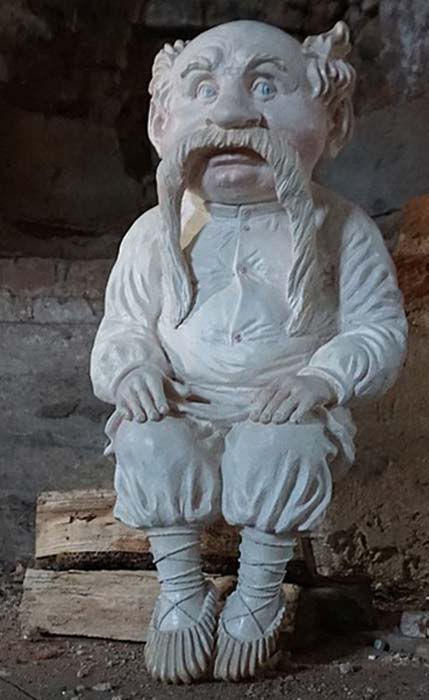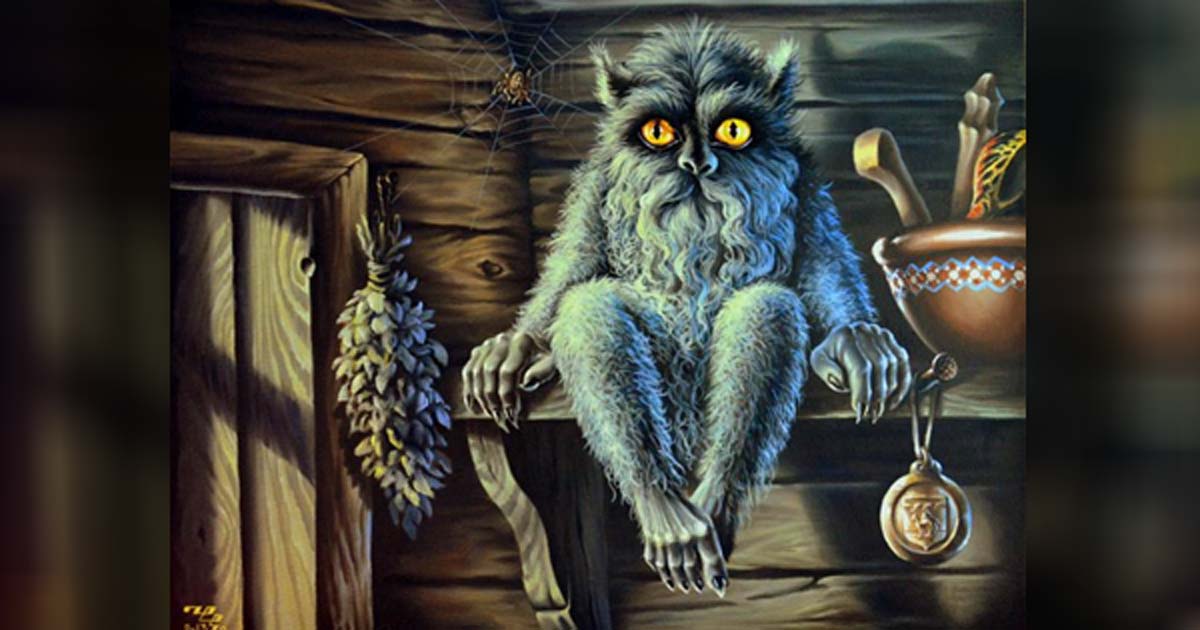Domovoi: Stay on the Good Side of This Mischievous Slavic House Sprite
The Domovoi is a supernatural creature found in Slavic mythology. These are household sprites that attach themselves to a family and serve as their guardian. As benevolent spirits, the Domovoi would do everything in its power to serve its family. But stay on their good side, lest they become upset and cause mischief.
Domovoi, Master of the House
The word ‘Domovoi’ (also spelled as Domovoy or Domovoj) is derived from the word ‘dom’, meaning ‘house’, and literally means ‘master of the house’. This creature is known by slightly different names in the various Slavic languages, for instance Domovyk in Ukrainian, and Damavik in Belarusian.
The Domovoi is most commonly described as being a tiny, hairy male humanoid creature with a long grey-beard. It may take on the form of a deceased ancestor, the current master of the house, or even family pets. Sometimes, the Domovoi is depicted as having a tail, tiny horns, and horse ears, or wearing a red shirt with a blue girdle.
The Domovoi Presence Is Felt but Not Seen
The Domovoi usually stays hidden from human sight and prefers dwelling in the dark corners of a person’s home, especially near the stove. Occasionally, a person may see the true form of the Domovoi. This, however, is a bad omen, as it is believed to be a warning of one’s impending death.
More often, however, the inhabitants of a house would feel the presence of the Domovoi in more discreet ways, for instance, through the sounds of its footsteps or when things in the house are moved. Pets making much noise in the night are said to be playing with the Domovoi. A Domovoi may even touch a person with its hand, or a man may wake up to find that his beard has been plaited. These are regarded to be signs of good fortune and of the Domovoi’s love for its family.

The Domovoi. Credit: Aleksandr Maskaev
Protection from the Domovoi
The Domovoi would protect the family they live with, especially the children and animals of the household. Additionally, these spirits are capable of protecting the house from calamities such as fires, accidents, lightning strikes, and floods. Nevertheless, the Domovoi can change from helpful to harmful spirits when angered. A home that is dirty, with lazy, disrespectful inhabitants may incur the displeasure of the Domovoi.
An upset Domovoi would cause trouble for the family, such as breaking objects, causing milk to go off, and even suffocating people in their beds. At times, a bored Domovoi may cause trouble by playing tricks on the family. For instance, things disappearing for no apparent reason may be blamed on a Domovoi.
There are a number of ways in which a Domovoi can be kept happy, the most common of which would be to place some milk and bread near the stove. The Domovoi is also believed to be quite fond of tobacco. Other ways to keep the Domovoi happy include maintaining a good standard of living in the house and not using bad language, especially during meals.
- A Cycle of Life and Death: Slavic Goddesses Morana and Vesna
- Do you dare enter a fairy ring? The mythical mushroom portals of the supernatural
- The nature and danger of the legendary Kobold

One way to keep a Domovoi happy is to give them milk. (axis-of-devil / CC BY-SA 3.0)
Rules to Live by to Keep Your Domovoi Happy
There are a number of rules to follow with regards to the Domovoi. For example, when a family is leaving the house for a period of time, they should sit in silence for a moment before going away, as this is a respectful way of saying goodbye to the Domovoi.
When a family moved to a new house, they would also take their Domovoi with them, so that they may continue to benefit from its protection. In order to do so, the family would invite the Domovoi to leave with them. In the olden days the Domovoi would be transported using a bast shoe, though this has today been replaced with a slipper.
Does the Belief in the Domovoi Still Exist Today?
Up until the 19 th, if not the 20 th century, belief in the Domovoi was widespread in Slavic countries. This is especially true for those living in rural areas. Although Christianity fought against the folk belief in these supernatural creatures, for instance, by depicting them as diabolical creatures, it has not been entirely successful. The common people, however, have managed to allow the Domovoi and their Christian faith to co-exist. For instance, when a family moves to a new house, they would invite a priest to bless the home, while making sure to bring their Domovoi from their old home with them.

Modern representation of Domovoy, the Slavic household god, by Belarusian sculptor Anton Shipitsa. (Natalia.sk / CC BY-SA 4.0)
Top image: Illustration of a Domovoi. Credit: Vladimir Chernikov
By Wu Mingren
References
EsoterX, 2012. Slavic Domovoi: The Heartbreaking History of a Household Goblin. [Online]
Available at: https://esoterx.com/2012/11/27/slavic-domovoi-the-heartbreaking-history-of-a-household-goblin/
Niklot, 2017. Domovoi – A House Spirit in Slavic Mythology. [Online]
Available at: http://slavicchronicles.com/mythology/domovoi-a-house-spirit-in-slavic-mythology/
Popovic, S., 2018. Domovoi – A Protective House Spirit From Slavic Mythology and Folklore. [Online]
Available at: https://www.slavorum.org/domovoi-a-protective-house-spirit-from-slavic-mythology-and-folklore/
todiscoverrussia.com, 2018. Domovoi. [Online] Available at: https://todiscoverrussia.com/domovoi/
Wood, B. H., 2015. Nightmare fuel #3: The spirit of hearth and home. [Online]
Available at: https://www.trans-siberian.co.uk/blog/the-domovoi/



















